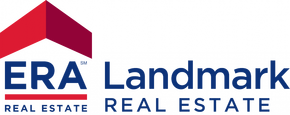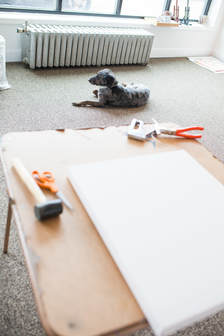 What is it that you make? What kind of materials/mediums do you use? I make bright and lively contemporary wildlife paintings with acrylics and oils, usually on thick canvases that I stretch myself. What is your process? I always start by stretching the canvas and getting the idea somewhat clear in my mind. Then, I sketch my wildlife very loosely and quickly (while still aiming for accuracy) with a charcoal that brushes off easily. I then get my first layer of paint down, focusing more on values than on colors, and keeping it again quick and loose. My last steps are refining the overall painting with oils and adding in any excitement it might need lastly. How do you pick your subject matter? My animals usually have some connection to an internal experience I am focusing on or going through. For example, I often associate Moose with a strong solitude, or Bears with playfulness and joy. I then use my colors and strokes to further whatever human experience I am trying to relate and celebrate. What is the most important element of what you do? It is my use of color and strokes to keep the paintings alive and to make the animals be full of personality. I value strong rendering, but I appreciate bold use of paint, proclaiming “this is ART” while also being aesthetically pleasing.
0 Comments
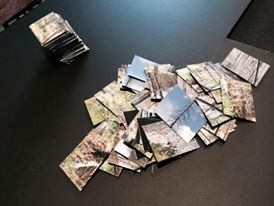 Storrs Bishop, local artist and Frame Garden manager What is it that you make? What kind of materials/mediums do you use? I make photo constructions using archival prints layered in a three-dimensional photocollage manner What is your process? I shoot a subject with my camera to generate 60 to 120 pictures which I then print to make different tiles. I then piece the tiles together to create an new image. It’s like putting together a jigsaw puzzle without knowing what the final product will be of. How do you pick your subject matter? I find that architectural and large, identifiable landmarks are always interesting to look at. What is the most important element of what you do? Taking something familiar and creating the sense of a new image from it that didn’t exist before I made it. What is it that you do? We see the Curated Closet as the juncture of Livingston's past, present and future. We reuse premium donated goods, recycle them for sale, and reinvest in our community. As with every other Community Closet project, proceeds from sales at the Curated Closet are reinvested in the community, and our nonprofit group has given over $350,000 in cash grants to charitable enterprises in Park County.
What is your process? Each day, we peruse the inventory of items that are donated to the Community Closet Thrift Store in search of higher end, brand name, vintage style, or eclectic clothing, accessories, collectables, and household goods – including furniture – that are then brought over to the Curated Closet store at 117 South Main Street. How do you pick your products? The Curated Closet chooses excellent-condition vintage clothing and accessories, high-end contemporary labels, fashion-forward styles, and locally commissioned art and goods that have been creatively recycled for reuse. We curate them and offer seasonal collections, for instance: red, white and blue items during 4th of July week and camping/national park souvenirs and supplies later in the summer. 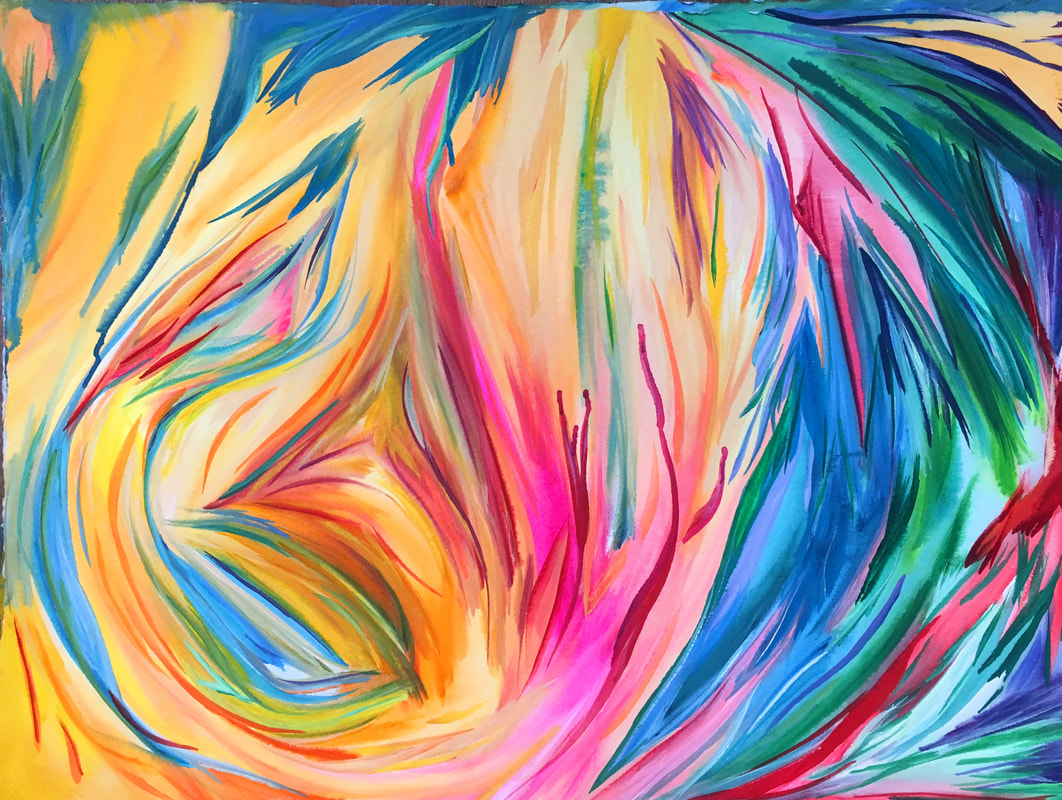 Hello! What is it that you make? What kind of materials/mediums do you use? I paint watercolors. What is your process? I feel an emotion and I want to feel it deeper and turn it into a visual mirror of a feelings or emotions. I listen to a specific playlist I've created based on my feelings and I paint. How do you pick your subject matter? My subject is my emotional inspiration... whatever touches me or makes me think. My subject matter picks me and inspires me. It may be a landscape or a smell or a large group of events that all culminate into one painting. It could be song lyrics, or the love the universe shares. How has your work evolved over time? Where do you see it going? My work has evolved and changed as I grow and I change my perspective. It will continue to morph into something new and wild! Anything else you would like us to know about your work? My art is not timeless but fragile and meant to be aged by water, earth, wind or fire. To be let go when the time is right. 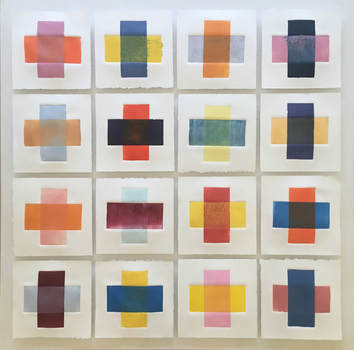 What is it that you make? I am both trained as an architect and practice as well as work as an artist. The gallery at studioryker hosts my artwork as well as the art and craft of other wonderful artists in a pop-up show format. What kind of materials/mediums do you use? With my current artwork I work in soft pastel and also make monoprints with a press. Monoprint is a singular print process, where each work is unique, like a painting. What is your process? My working process is different depending on the medium, monoprints are more “abstract expressionist” in that there is not a recognizable form in the work, instead more of an emotional expression is conveyed through color and figure. The soft pastels are more representational and focus on nature, both in details and larger landscapes. Both mediums allow me to focus on the experience of nature, through different modes of expression. How do you pick your subject matter? I spend a lot of time outside, my work is inspired from these experiences. Sometimes the inspiration is direct and immediate from a particular experience, other times the inspiration is cumulative from experiencing the same place many times. What is the most important element of what you do? I love the opportunity art provides to connect with experiences and the world in a deep and contemplative way through expression. What is it that you make? What kind of materials/mediums do you use?
I create a series of oil paintings called Iron Horses: images of real-life working ranch and rodeo horses fused with railroad-inspired typograffiti. I use “Pearl” in reference to my tagline: “No Grit, No Pearl”, because I believe we have to get through the difficult times in life to earn its beauty. What is your process? My process is to create a vibrant background with a working horse fitted tightly against the edges of the canvas, then to construct my PEARL tag onto the big muscles of these equine athletes. I like the vibrancy and tension created by the unusual combination of these iconic urban and rural western “cultures”. How do you pick your subject matter? I gravitate to super-athletic horses in the middle of a very intense moment - fully extended, fully committed - the ones with a lot of grit and expression in their faces, especially their eyes, ears, nostril and gait. I let the colors and style of writing evolve from each horse, but I work to keep both the horse and the graffiti equally animated and intense. What is the most important element of what you do? Most important to me is expressing the passion and energy of both art forms – the athleticism of horses who are completely focused on and fearlessly dedicated to their job, and the creativity and ferocity of graffiti: writers are equally as fearless, focused and fierce in their pursuit of tagging, bombing, and outperforming each other with elaborate burners. I love both art forms, and I love putting them together as a uniquely creative play on words and worlds: traditional western ranch life and working horses combined with the urban movement (is it vandalism or art?) of street art. Both the horses and the lettering are beautiful and exciting to me: strong, powerful, purpose-driven. 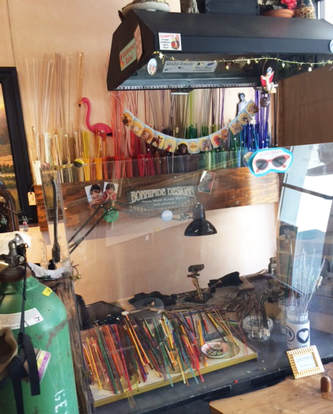 What is it that you make? What kind of materials/mediums do you use? I make glass beads by melting rods of colored glass over a steel mandrel that has been dipped in clay; then i combine my glass with semi-precious stones and vintage bits to create little sparkly bits of happiness. What is your process? My beads are made one-at-a-time by melting rods of colored glass over the flame of a torch. This ancient technique, known as lampworking, was a guarded secret process in Italy centuries ago. In fact, bead makers at one time were almost prisoners, working on the island of Murano. They were threatened with death to their families if they shared the secrets of their glasswork. The glass I use has been made by the same factory that has been making the same colors for over 500 years! I often marvel at my luck of working with a modern torch and kiln, with a cat and Netflix by my side, where anyone can visit and see my studio today. |
AuthorWrite something about yourself. No need to be fancy, just an overview. Archives
July 2017
Categories |
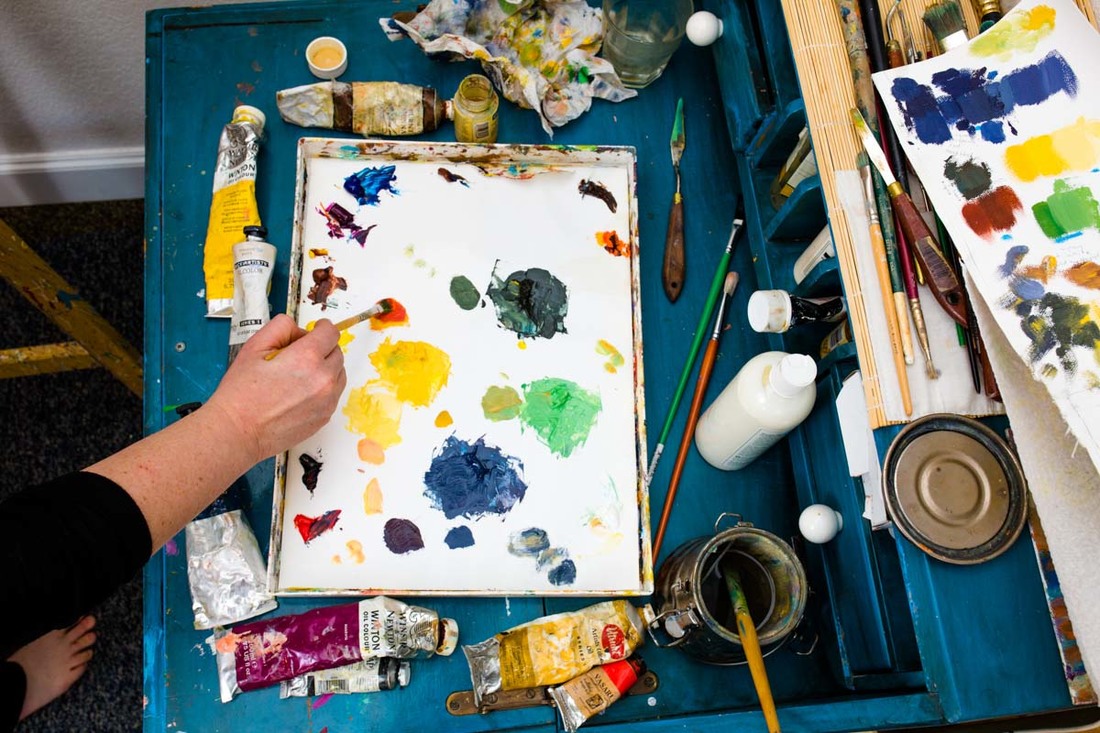
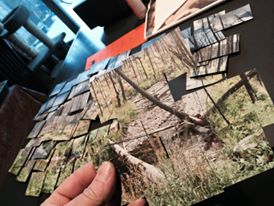
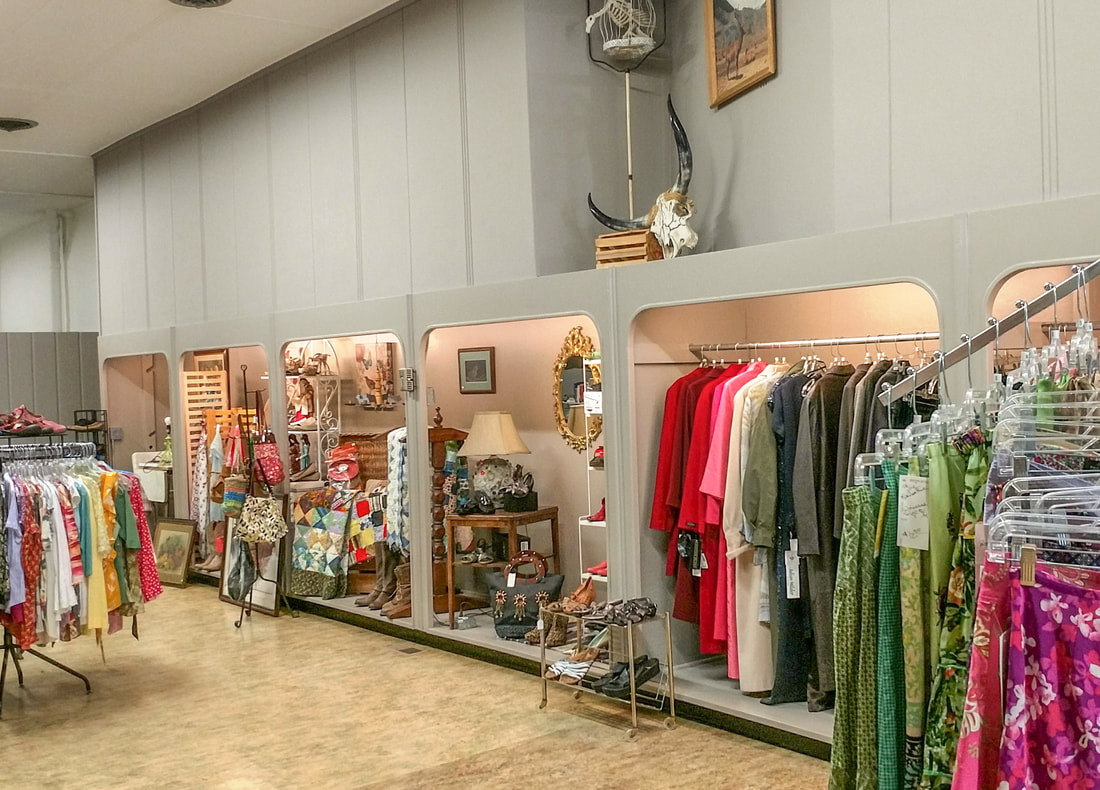
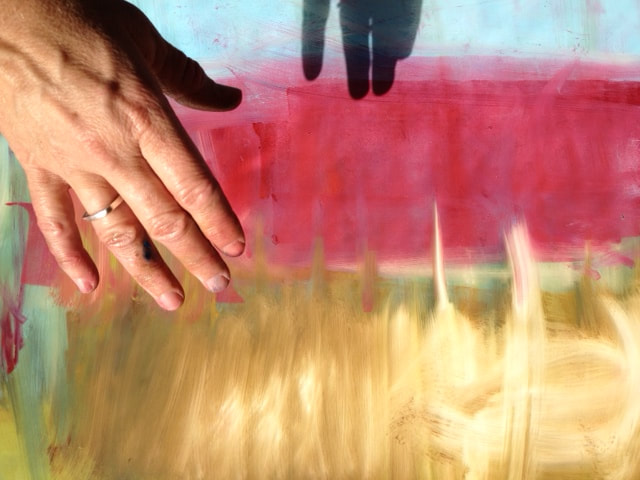
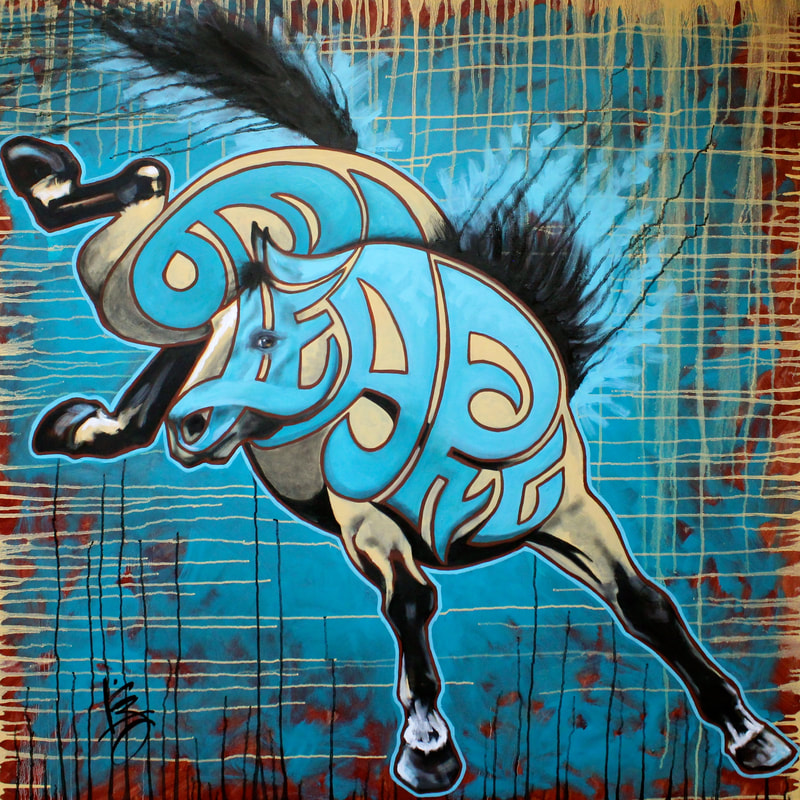
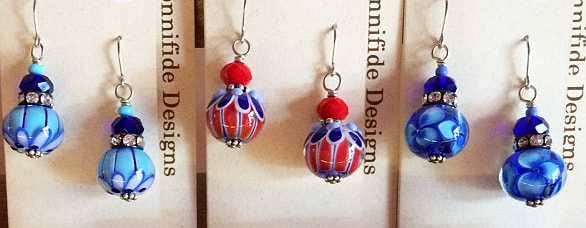
 RSS Feed
RSS Feed
